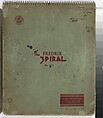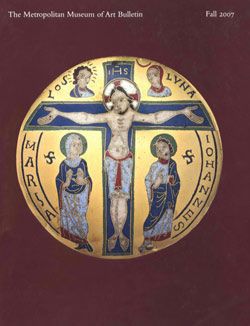Sketchbook
Arshile Gorky American, born Armenia
Not on view
Arshile Gorky is most often identified with the biomorphic abstractions he created in the 1940s, like The Met's painting Water of the Flowery Mill (1944; MMA 56.205.1). But prior to achieving that mature style his work underwent several transformations that reflected his study of artists from Jean-August-Dominique Ingres to Pablo Picasso. One pencil drawing in this rare early sketchbook from about 1930–37 reveals Gorky's admiration for Ingres's portraits and fine graphic line. In it, he combined figures from two different Ingres drawings: in the center is the standing mother and child from Madame Guillaume Guillon Lethière, née Marie-Joseph-Honoree Vanzenne, and Her Son Lucien Lethière (1808; MMA 29.100.191), and at the top right is the head of the sitter in François Forster (1825; Musée Bonnat, Bayonne). Consciously or unconsciously, Gorky altered the faces so they resemble the members of his own family, giving them large heavy-lidded almond-shaped eyes and ovoid heads with softly pointed chins. Such faces and family groupings occupied Gorky between 1926 and 1942, when he painted and drew many portraits and self-portraits, including two major canvases titled The Artist and His Mother (Whitney Museum of American Art, NY and National Gallery of Art, Washington, D.C.), in which he depicted himself as a young boy.
Due to rights restrictions, this image cannot be enlarged, viewed at full screen, or downloaded.
This artwork is meant to be viewed from right to left. Scroll left to view more.





